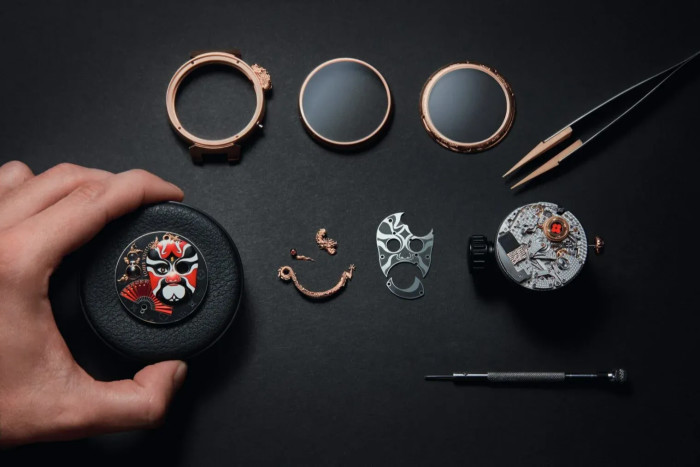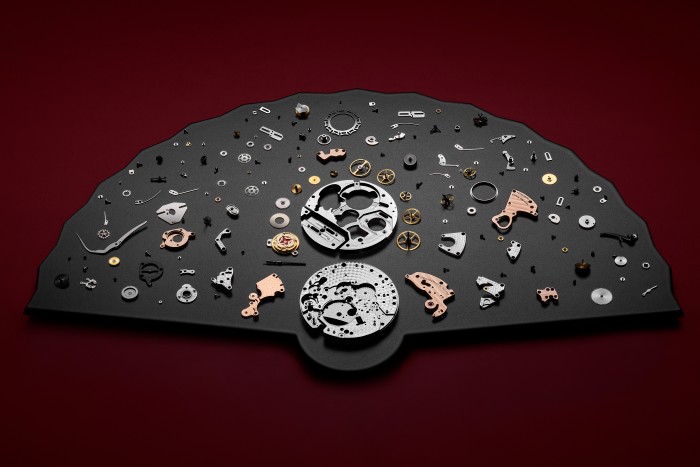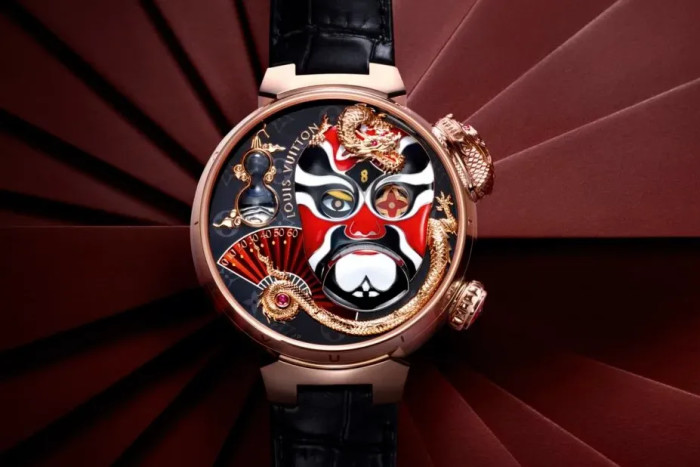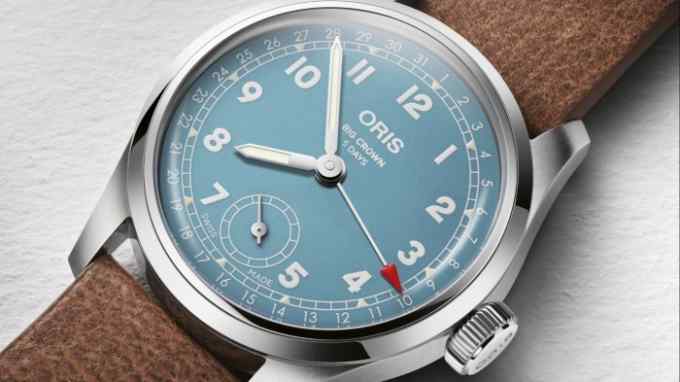Deconstructed watch: Louis Vuitton Tambour Opera Automata

Roula Khalaf, Editor of the FT, selects her favourite stories in this weekly newsletter.
This year marks the 35th anniversary of Louis Vuitton’s first foray into watchmaking.
The Monterey 1 of 1988 was designed by Italian architect and town planner the late Gae Aulenti, who took inspiration from the brand’s history as a maker of luxury luggage to create a complex traveller’s watch with world time, alarm, calendar and moon-phase functions.
With no timekeeping history to its credit, LV partnered with established maker IWC to produce the watch, which had a gold case, a quartz movement and a retail price of about £10,000. A sales flop, it was discontinued in 1995.
Fast forward 28 years and the Monterey 1 has become a cult collector’s piece, so much so that even Jean Arnault — the 24-year-old son of LVMH founder Bernard Arnault and Louis Vuitton’s youthful director of watches — only recently managed to secure an ultra-rare, white gold example after months of searching the internet.
The fact that collectors are now hunting down the Monterey 1 and other early LV timepieces demonstrates how the brand has developed its horological division from being perceived as merely a seller of fashion pieces to its recognition today as a watchmaking force to be reckoned with.
It first upped its game in 2007 by forming an alliance with Geneva-based haute horlogerie workshop La Fabrique du Temps, which it bought outright three years later.
Since then, Louis Vuitton has grown its competence in complicated and imaginative watchmaking through the in-house production of minute repeaters and tourbillons, ‘Spin Time’ models that show the hour on revolving cubes, the hand-enamelled Escale World Time and the unique Twin Chrono of 2013 which could simultaneously record two elapsed times and the difference between them.
And now LV is tackling one of the most rarefied of all areas of horology with the release of its second — and most complicated — automata watch to date.
Spurred on by its first attempt — the ‘Carpe Diem’ skull watch that won the Audacity prize at November’s Grand Prix d’Horlogerie de Genève — Louis Vuitton’s high complication watchmaking team has created the Tambour Opera Automata.


Inspired by the Chinese Sichuan opera’s Bian Lian — a theatrical art involving the almost imperceptibly quick changing of facial masks bearing multiple expressions — the watch uses a 426-part movement created by master watchmakers Michel Navas and Enrico Barbasini to power five animations on the hand-enamelled dial.
The 16-second spectacle is activated by a dragon’s head-shaped pusher at the one o’clock position on the case. The action causes the pink gold dragon’s head on the dial to rise up, revealing a jump hours display on the forehead of the enamelled mask.
The dragon’s tail simultaneously become a retrograde minutes indicator, while the expression shown on the mask changes from happy to sad as its eyebrows frown, its left eyelid shuts and the pupil of its right eye retracts to reveal a flower in the form of the LV monogram.
The dial is rich in Chinese symbolism, with the dragon representing strength and nobility, the open fan being a sign of wisdom, stylised clouds bringing good luck and a glass calabash gourd to ward-off evil spirits.

One thing missing, however, is a specific symbol for wealth.
Although simply wearing the watch should mark out the owner as being reasonably well-off — it costs €520,000.

Comments